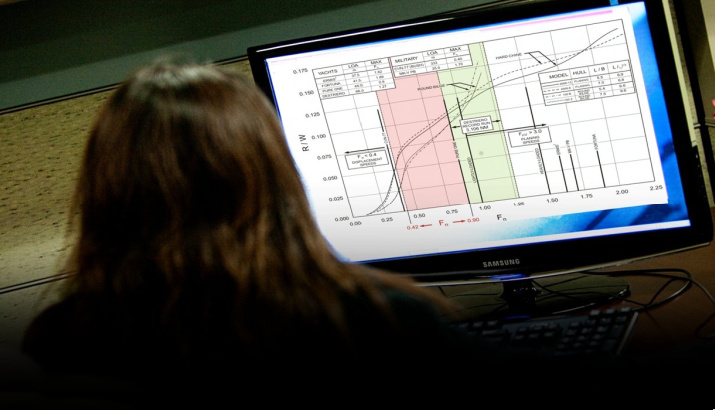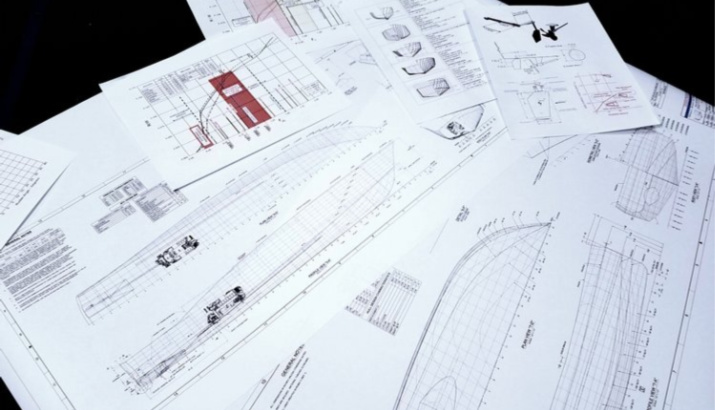Naval Architecture

Gibbs & Cox naval architects draw from nearly 100 years of industry experience and technical development to provide a comprehensive set of design services across a variety of platforms. Our naval architecture services span the entire ship’s lifetime, from early stage concept designs through detailed design, shipyard construction support, full lifecycle and sustainment support, ship alterations, service life extensions, and disposal.
Our engineers combine the use of in-house proprietary naval architecture tools and state of the art software with an extensive technical library to provide accurate naval architecture assessments to our clients.
Key components and outputs of our design process include:
Additionally, we offer a variety of design and development services, including:
The Gibbs & Cox concept design process involves the development of design alternatives based on client requirements. Our team of naval architects and marine engineers adapts a set of top-level requirements into concept-level definitions to evaluate technical feasibility, cost and performance.
These efforts involve the complete early phase definition of the ship, including:
The Gibbs & Cox feasibility design process is an expansion of the conceptual design phase and includes trade off evaluations, typically considering system/subsystem level development that are oriented towards platform-level optimization. Systems engineering requirements at the total ship level are also allocated to the system/subsystem level and to the component level.
Following a systems engineering approach, emphasis is placed on performance characteristics, including:
Gibbs & Cox refines our approach to tailor our focus to suit a client’s key needs and ship requirements.
Typical products developed during the feasibility phase include the following:
Gibbs & Cox uses the alternatives developed in trade-off studies to develop data-informed solutions for the design, resulting in a higher-fidelity product.
The Gibbs & Cox preliminary design service process includes support to both systems engineering and specific technical areas. The Preliminary Design phase builds on the major ship characteristic/system decisions made during Feasibility Design to achieve a converged baseline design with defined systems requirements.
Objectives of this phase include:

The Gibbs & Cox contract design process evaluates the preliminary design further, resulting in a final system design that has sufficient detail and requirements development to begin the detailed design phase.
The products developed during the Contract Design phase are used by the shipbuilder to develop a cost estimate for bidding purposes. The objectives of this phase are confirmation that the ship design meets the operational requirements and cost, documentation of criteria for acceptance of the ship and identification of technical and schedule risks.

G&C’s Detail Design & Construction solutions are highly tailorable to the needs of the program, shipbuilder, and end-customer. Our efforts seek to maximize producibility and affordability while mitigating risk for procurement, planning, construction, test, delivery, and acceptance.
Generally, a Detail Design program comprises two key phases:
We follow a proven and systematic approach to Functional Design that entails the maturation of the vessel design to a comprehensive and consistent set of design products ready for customer, class, and regulatory approval. Design decisions during Functional Design use an established tradeoff criteria aligned to the program’s objectives for performance, acquisition cost, and ownership cost. Our tools and processes yield functional design products that are readily verifiable for compliance with the specifications, class rules, regulatory standards, and other contractual requirements.
Production Design develops the 3D product model based on the functional drawings, vendor furnished information, customer furnished information, and build strategy into a configuration optimized for construction. As 3D modeling completes, production drawings and information are extracted and detailed to support complete construction of the vessel in a sequence and format best aligning with the build processes and work centers at shipyard.
For larger ships and more complex vessels, our 3D modeling is typically performed using a zonal approach that follows the module breaks, construction sequence, and other build strategy elements of the ship. As 3D modeling is completed for each design zone, drawings and information are extracted from the product model and issued to production group for planning, fabrication, assembly, and installation. We use the current generation of industry CAD/CAM software for developing and maintaining the 3D product model. Gibbs & Cox has decades of experience using a variety of 3D CAD ship design tools on a broad range of vessel types from simple barges up through complex naval combatants. We augment the capabilities of the 3D CAD/CAM software with other engineering/design tools and processes to deliver a completely integrated detail design.
During 3D modeling, our proprietary Design Control process drives a systematic effort to concurrently arrange structure, accesses, partitions, systems, and equipment within a defined area to produce an optimum arrangement. This includes eliminating physical interferences to reduce construction costs and rework and allows for a greater degree of pre-outfit. Design Control also manages clearances and anthropomorphic modeling to verify effective human-systems interfaces.
During construction, we provide a bespoke solution for the client based on their needs that may include onsite design liaison, manufacturability/producibility engineering, weight control and reporting, configuration management, and test/trials oversight.
During construction, we provide platform development with on-site and off-site support. Our support capabilities include:

